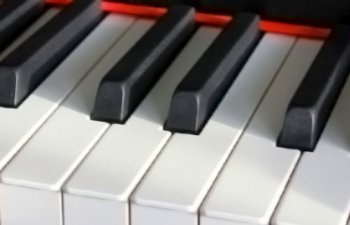Ed Sheeran, award winning singer and songwriter, was hit with a $20 million copyright infringement lawsuit concerning his top 10 song "Photograph". The two songwriters behind "Amazing", made famous by singer Matt Cardle ("The Ex Factor" winner), claimed that Sheeran and co-writer Johnny McDaid "copied, and exploited, without authorization or credit, the work of other active, professional songwriters, on a breathtaking scale, unabashedly taking credit for the work of these songwriters by claiming it to be their own." The Amazing songwriting duo is being represented by Nashville attorney, Richard Busch, who also represented Marvin Gaye in his successful suit against Robin Thicke in the "Blurred Lines" copyright case.
The complaint alleges that the chorus in Sheeran's Photograph shares 39 identical notes in pitch, rhythmic duration and placement in a music measure with Amazing. This amounts to roughly 70% of the chorus with regard to those four musical characteristics. When listening to the songs side by side, there is a striking similarity. Internet users have overlaid both songs on top of each other on YouTube and the result indicates only minor variations, as most notes in the chorus are identical, both the notes and their timing.

Musicians are understandably concerned about being able to identify where allegations of originality end and unlawful copying begins. Basic copyright requires:
"Blurred lines" is probably a good phrase to describe the second requirement for finding copyright infringement. What constitutes a "substantial similarity" between songs? There are no specific lines which can be drawn absolutely which can be used to determine whether one song is infringing upon another. Each music infringement case is unique. Few musical artists have the means to bring infringement cases to the courts as plaintiffs. And there is also the matter of whether the pockets of the defendants are deep enough to warrant bringing a lawsuit. Adding the inherent difficulty in gauging the likelihood of success, it is unsurprising that a limited body of legal precedent exists when it comes to decisions on copyright infringement concerning songs and songwriting.
 Music is a language that has a strong base in mathematics and the physics of sound. An equivalent to grammatical rules in musical language are "scales" - a series of notes and sounds placed in patterns. Perhaps the most famous is the set of 8 notes from "The Sound of Music" movie sung by Julie Andrews ( do-re-me-fa-so-la-ti-do).
Music is a language that has a strong base in mathematics and the physics of sound. An equivalent to grammatical rules in musical language are "scales" - a series of notes and sounds placed in patterns. Perhaps the most famous is the set of 8 notes from "The Sound of Music" movie sung by Julie Andrews ( do-re-me-fa-so-la-ti-do).
Like spoken language, music also can contain a wide variety of expression. But when restricting use to the basic building blocks of language, there will inherently be a limited amount of variety in expression. For example, if one is using a third grade vocabulary, how much variety should one expect from basic speech patterns?
Pop songs we enjoy contain many similarities. They are usually more simplistic in nature and easily digestible and appreciated by the public than more complex sounds such as jazz. It might be a surprise to learn that an overwhelming number of pop songs use the same basic and repeating "chord" patterns. Phrases like "twelve bar blues" and "1-4-5" describe a song or melody comprised of just three chords from a scale (the first, fourth and fifth notes). "Twist and Shout" and "La Bamba" are examples of famous 3 chord songs. A substantial similarity also exists between many Chuck Berry songs, such as "Johnny B. Goode" and "Roll Over Beethoven". Compare those musical compositions with songs like Little Richard's "Good Golly Miss Molly" and one can begin to identify the pattern and recognizable similarity.
As opposed to verbal language, music contains many more variables than the words on a page. Music includes the element of composition, such as scales, chord structure and notes. But it also can include the performance component - the representation of the musical composition in sound. This includes the instruments used, the nuances of expression, the mix and orchestration to name a few. As such, the performance aspect of music presents a complex set of variables to consider. But copyright law can protect composition and performance individually.
The presence of actual knowledge of another artist's work can play a role in coloring a copyright infringement decision. Public comments were greatly divided as to whether Robin Thicke's "Blurred Lines" and Marvin Gaye's "Got to Give it Up" were sufficiently similar to be considered musical plagiarism and unlawful. While there is certainly a resemblance in overall sound, rhythm and style the songs are noticeably different in many other areas. This includes the musical composition, making the songs easily distinguishable. But the most damaging evidence against Thicke was his admission during a prior interview that Gaye's song was an inspiration in the creation Blurred Lines. It leaves one to wonder whether this swayed a jury to decide that something as open and previously unprotected as a "feel and genre" was copyrightable.
Is it possible that two artists, playing in a relatively simple musical sandbox, could come up with very similar melody lines for a chorus? Absent proof of actual plagiarism, the fact that it is possible, albeit unlikely, presents a challenging question where to draw the line of copyright infringement. A finding favoring Cardle's camp could significantly chill creativity surrounding the basic building blocks of music and melody line construction. Listen for yourself - there are no easy answers.
Photograph Pop Song Contains Substantial Similarity
The complaint alleges that the chorus in Sheeran's Photograph shares 39 identical notes in pitch, rhythmic duration and placement in a music measure with Amazing. This amounts to roughly 70% of the chorus with regard to those four musical characteristics. When listening to the songs side by side, there is a striking similarity. Internet users have overlaid both songs on top of each other on YouTube and the result indicates only minor variations, as most notes in the chorus are identical, both the notes and their timing.
Blurred Lines in Copyright Law for Music
Musicians are understandably concerned about being able to identify where allegations of originality end and unlawful copying begins. Basic copyright requires:
- access to the work (the song being played on the radio); and
- a substantial similarity between the allegedly infringing work and the copyrighted work
"Blurred lines" is probably a good phrase to describe the second requirement for finding copyright infringement. What constitutes a "substantial similarity" between songs? There are no specific lines which can be drawn absolutely which can be used to determine whether one song is infringing upon another. Each music infringement case is unique. Few musical artists have the means to bring infringement cases to the courts as plaintiffs. And there is also the matter of whether the pockets of the defendants are deep enough to warrant bringing a lawsuit. Adding the inherent difficulty in gauging the likelihood of success, it is unsurprising that a limited body of legal precedent exists when it comes to decisions on copyright infringement concerning songs and songwriting.
The Language of Music
 Music is a language that has a strong base in mathematics and the physics of sound. An equivalent to grammatical rules in musical language are "scales" - a series of notes and sounds placed in patterns. Perhaps the most famous is the set of 8 notes from "The Sound of Music" movie sung by Julie Andrews ( do-re-me-fa-so-la-ti-do).
Music is a language that has a strong base in mathematics and the physics of sound. An equivalent to grammatical rules in musical language are "scales" - a series of notes and sounds placed in patterns. Perhaps the most famous is the set of 8 notes from "The Sound of Music" movie sung by Julie Andrews ( do-re-me-fa-so-la-ti-do).Like spoken language, music also can contain a wide variety of expression. But when restricting use to the basic building blocks of language, there will inherently be a limited amount of variety in expression. For example, if one is using a third grade vocabulary, how much variety should one expect from basic speech patterns?
Pop songs we enjoy contain many similarities. They are usually more simplistic in nature and easily digestible and appreciated by the public than more complex sounds such as jazz. It might be a surprise to learn that an overwhelming number of pop songs use the same basic and repeating "chord" patterns. Phrases like "twelve bar blues" and "1-4-5" describe a song or melody comprised of just three chords from a scale (the first, fourth and fifth notes). "Twist and Shout" and "La Bamba" are examples of famous 3 chord songs. A substantial similarity also exists between many Chuck Berry songs, such as "Johnny B. Goode" and "Roll Over Beethoven". Compare those musical compositions with songs like Little Richard's "Good Golly Miss Molly" and one can begin to identify the pattern and recognizable similarity.
As opposed to verbal language, music contains many more variables than the words on a page. Music includes the element of composition, such as scales, chord structure and notes. But it also can include the performance component - the representation of the musical composition in sound. This includes the instruments used, the nuances of expression, the mix and orchestration to name a few. As such, the performance aspect of music presents a complex set of variables to consider. But copyright law can protect composition and performance individually.
Actual Knowledge and Plagiarism
The presence of actual knowledge of another artist's work can play a role in coloring a copyright infringement decision. Public comments were greatly divided as to whether Robin Thicke's "Blurred Lines" and Marvin Gaye's "Got to Give it Up" were sufficiently similar to be considered musical plagiarism and unlawful. While there is certainly a resemblance in overall sound, rhythm and style the songs are noticeably different in many other areas. This includes the musical composition, making the songs easily distinguishable. But the most damaging evidence against Thicke was his admission during a prior interview that Gaye's song was an inspiration in the creation Blurred Lines. It leaves one to wonder whether this swayed a jury to decide that something as open and previously unprotected as a "feel and genre" was copyrightable.
How Far Should Copyright Protection Extend to Music Composition?
Is it possible that two artists, playing in a relatively simple musical sandbox, could come up with very similar melody lines for a chorus? Absent proof of actual plagiarism, the fact that it is possible, albeit unlikely, presents a challenging question where to draw the line of copyright infringement. A finding favoring Cardle's camp could significantly chill creativity surrounding the basic building blocks of music and melody line construction. Listen for yourself - there are no easy answers.
- Legal Practice
- Entertainment Law
- Jurisdiction
- US Federal
- Court of Law
- U.S. District Court
